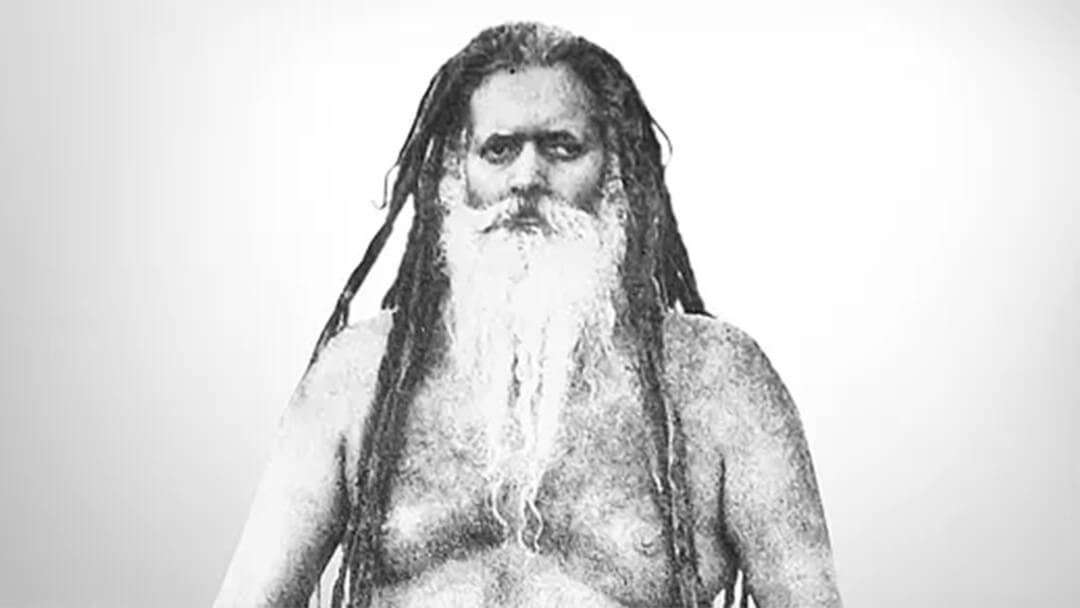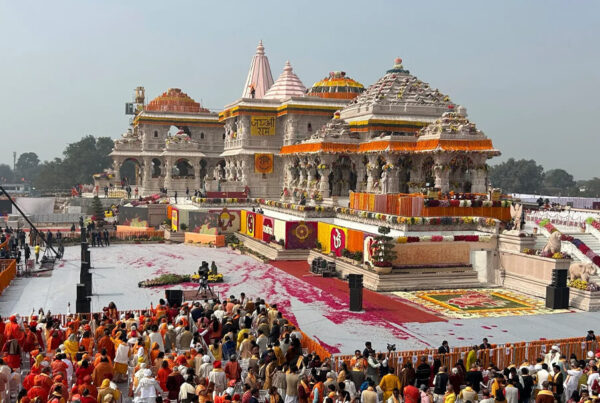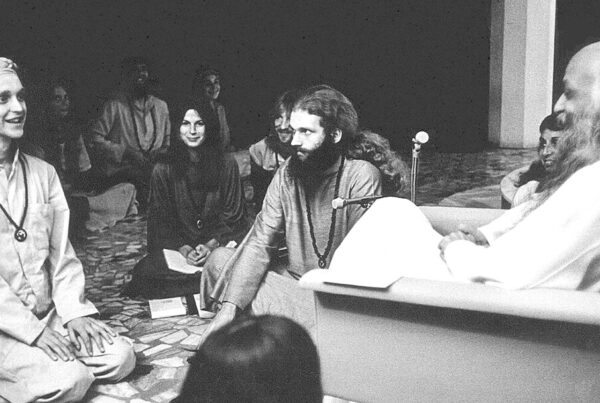
Totapuri Baba was the Guru of Ramakrishna Paramhansa. He had the great realization of adwait (oneness) and his life was the manifestation of adwait. He left his body in a desolate forest in Puri, India at the age of 250 on August 28th, 1961.
The teerthas or holy places of all religions are beautiful, but the science that the Hindus have applied to their teerthas is astounding.
The Hindus have built their holy places in spectacularly beautiful places. There are four main teerthas; Jagannath Puri, Rameshwaram, Dwarka and Badrinath. The first two are on the Indian shoreline of the Bay of Bengal, the third is on the shore of the Arabian Sea and the fourth is in the high Himalayas. All four places are natural wonders. Just visiting these places is a blissful experience and makes one’s mind turn within.
Water bodies are intrinsic to Hindu pilgrimage sites. Hindus understood the mysteries associated with water and built all their holy places either on riverbanks or on seashores. Where these were not available they created large artificial bodies of water and established a teertha there.
While on one of my trips to Russia, I watched a documentary called Water, which included the scientific findings of many Western scientists related to the mysterious behavior of water. Their main finding was that water has the capacity to absorb information, thoughts and feelings. Different atmosphere can change the molecular composition of water in different ways. Each composition broadcasts a different vibration. Therefore, water-bodies can retain energy for a long time. Hindus understood this subtle science and built all their teerthas around waterways.
Among the four main holy places of the Hindus, Jagannath Puri is regarded as the supreme buddhafield and is called the heaven on earth. It is on the shoreline of the Bay of Bengal. The Vaishnav sect of the Hindus has a special connection with this place. Enlightened masters such as Adi Shankaracharya, Ramanujacharya, Nimbarkacharya, Chaitanya Mahaprabhu and Yukteswar Giri spent large segments of their lives here.
Until a few years ago we used to organize a meditation camp there every year. The Holiday Resort at the beach is a three star hotel, but since the owner, Mr. Mahapatra, is religiously inclined, he provided us the space for the camp at a reasonable rate. The camp would get participants from India and Nepal, and other countries as well. One of the years when I was there for a camp, I stayed on for a few more days to visit some important places.
One day we were driving around a forest outside the city of Puri, and came across a small old temple called Loknath Shiva. There I heard about the Girnarbant Ashram where a naga (naked) swami’s body was preserved in his samadhi. Since the ashram was in the middle of the forest, we had a difficult time locating it. A dense forest and sand dunes surrounded the ashram. When I finally arrived there, I was amazed to find that the naga swami was no other than Ramakrishna Paramhansa’s Guru, Totapuri Baba. He had had the great realization of adwait (oneness) and his life was the manifestation of adwait. He had left his body in that desolate forest at the age of 250 on August 28th, 1961.
His name occupies a great significance in the life of Ramakrishna. Since Totapuri Baba was a naga swami of the Puri sect, Ramakrishna used to call him Nangta, the naked one. He was a wandering ascetic who ate only that which he himself cooked, and he didn’t stay in one place for more than three days. He had taught Ramakrishna the philosophy of adwait and given him the experience of nirvikalpa samadhi (ultimate enlightenment). Likewise he had learned sagun bhakti (devotion) from Ramakrishna. He had spent eleven months in the Dakshineswar temple in Calcutta with Ramakrishna.
After leaving there, he travelled as a wandering ascetic until he decided to live alone in the secluded forest at Puri at the age of 210 in 1920.
When I reached the samadhi of Totapuri Baba by chance, a great joy filled me and I had the desire to learn more about him. However, there was nobody around. There was only a locked glass cupboard in the ashram. One brahmachari (celibate monk) lived there but he had gone to the city when we arrived. We spent the whole day waiting for him to return. He returned in the evening but he spoke very little, and I had great difficulty getting him to speak about Totapuri Baba. Later, when we were about to leave, he opened the glass cupboard and took out a book. He presented it to us; it was a book in English on Totapuri Baba written by his Bengali devotee, Monika Mitra. I came to know about Baba’s life through this book.
Monika was a young girl who had come to Puri to recuperate from an ailment. She was pulled mysteriously towards Totapuri Baba’s Ashram. Baba allowed her to spend time in the ashram as she had very good sanskars. Baba spent most of his time in solitude and silence. He used to meditate naked on a deerskin mat, and didn’t entertain casual visitors; no seeker was allowed to stay in his ashram for any length of time.
Monika’s memoir remains the prime source of information on Totapuri Baba’s life. There are some anecdotes from the memoir which are worth sharing here:
THE MISCHIEVOUS COW
There was a cow in the ashram but Baba never drank its milk. Rather he preferred milk brought from outside. The cow used to eat the crops from a nearby farm. When the owner of the farm came to complain, Baba gave the cow to the farmer saying that since it has eaten your crops, the cow is yours. The cow was not willing to go with the farmer. Baba scolded the cow and said, “You had a habit of stealing in your past two lives. That is why you had to be born as an animal in this life. It is because of your habit of stealing which you developed in your past two lives that you eat crops that belong to someone else. Change your ways in time! Go with this farmer and serve him by giving him your milk, and wash your past sins. You were able to spend some time with me in this life. Now repay your debt by giving milk and be free of this animal life.”
When the cow heard this, it shed tears and went with the farmer.
THE AGE OF A BANYAN TREE
A lot of visitors would ask Baba, “Are you Ramakrishna’s Guru? Ramakrishna left his body many years ago but how come you are still alive? What is your age?”
Baba did not answer such questions to those who were only inquisitive. He would continue sitting silently in meditation. If a genuine seeker would ask the same questions he would say, “Go and ask this banyan tree how old it is. What will you gain by knowing its age? If you can sit in its shade when it’s hot, isn’t that enough?”
But once when Monika had asked him he had answered, “One day I was returning from Gangasagar after having a bath there. When I reached Dakshineswar, I saw tremendous spiritual potential in the poor Brahmin Ramakrishna, and because of his love I stayed there for eleven months.”
He never said anything more than that about himself.
THE BURNING LEG
Once Baba was meditating on the bank of the Ganga at a place called Bhagalpur. The villagers revered him and loved to serve him. This day the villagers smelt burning human flesh close to Baba’s hut. The smell surprised them because there was no cremation spot anywhere around. They searched the area to find out what exactly was burning. The smell led them to Baba’s hut itself. When they went inside they saw that a burning log from Baba’s fire pit had accidentally fallen on Baba’s leg and it was burning. But Baba was in the trance state of nirvikalpa samadhi and was not aware of what was happening to his body. The villagers put out the fire on Baba’s leg and nursed his burn.
DIVINE INTERVENTION
Once there was a big flood of the Ganga. When it started to flood the whole village, all the villagers came to Baba crying for help. “If you don’t have mercy on us, the whole village will be drowned. The flood has already taken our crops, please save our houses,” they begged.
Baba did not say anything as usual. He listened to them quietly and closed his eyes, and started meditating. The next morning the Ganga changed her path, leaving a lot of silt on the villagers’ fields. The next year they had a bumper crop due to the silt deposit. After this miraculous event, Baba became even more famous in the area. People from far away started coming to meet him, bringing many gifts. When the crowd started to disturb him, Baba left Bhagalpur and went to Puri to live there in seclusion.
THE HEALING HANDS
Monika was weak and suffered from chronic headache. As no medicine was able to heal her, she had come to Puri to heal herself, and eventually arrived at Baba’s ashram. One day, suffering from severe headache, she was sitting silently close to where Baba was meditating. Baba opened his eyes and asked her, “What is happening to you?”
Monika did not want to bother Baba by telling him her problems, but Baba knew what her problem was and called her towards him. He put his hand on her forehead and closed his eyes. When he opened his eyes after a while, he said, “This disease will not bother you again. You have been forever cured.”
When Monika’s parents heard that she had been cured, they started calling her back to Calcutta. She did not want to leave Baba, but when her parents started to pressure her heavily, she consulted Baba.
Consoling her, Baba said, “Now it is time to return home. You will be married very soon.”
Monika didn’t want to leave Baba’s satsang to get married.
What Baba said to her finally convinced her to go.
“A truthful and honest householder is far more pure than a so-called ascetic. A lot of frauds wear the garb of a monk, and for a young woman like you it is far safer and more enjoyable to lead a householder’s life,” said Baba.
Baba’s words came literally true. When Monika returned to Calcutta, she got married to a gentleman named Sachindrakumar Mitra who had a job in the United Nations. Because of his job, she was able to fulfill her wish to travel the world. After Baba left his body, Sachindrakumar also became his devotee.


